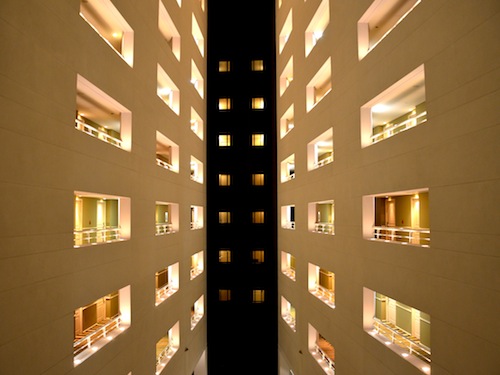RALEIGH, N.C., (April 5, 2013) – FMI, the largest provider of management consulting and investment banking services* to the engineering and construction industry released today its Q1-2013 Construction Outlook. Although the strength of individual markets is shifting, the forecast for total construction-put-in-place for 2013 continues to show an increase of 8% over 2012 levels. The $918,897 million estimate is a solid improvement, but FMI does not expect to return to the days of annual construction above the trillion-dollar mark until 2015.
The star of the show is residential buildings with a 23% rise in single-family buildings. While much of business sector is still in wait-and-see mode, some industries are breaking the mold and planning for growth. Commercial, lodging and office construction are starting to pick up.
The rich shale regions of the country are seeing a lot of construction activity. With oil and gas exploration booming, these regions are in need of housing, as well as the construction of roads, rail and pipelines to move the product from the fields to refining and distribution sites.
In addition, the potential for greater energy independence and lower energy prices is helping to make the U.S. more competitive in the global market and enticing more manufacturing to relocate in the U.S.
Residential Construction — Single-family housing put in place grew 19% in 2012, and FMI expects another 23% growth to reach $161 billion by the end of 2013. Multifamily construction improved a whopping 47% in 2012, with FMI looking for another 31% in 2013.
Nonresidential Construction Trends and Forecasts by Sector:
Lodging — After three years of steep declines, the market for lodging construction came back a strong 25% in 2012 and FMI expects another 10% growth in construction put in place for 2013.
Office — Office construction is finally showing a solid but slow turnaround with 5% growth in 2012 and another 5% increase expected in 2013.
Commercial — Commercial construction is the third largest nonresidential construction market behind education construction and manufacturing construction. That is why it is good to see that it continues into its third year of good growth, moving up 8% in 2012 and looking for another 7% to reach $50.3 billion in 2013.
Health care — Health care construction was moderate in 2012, growing only 3%, but FMI expects it to pick up in 2013 to 8% to $44.2 billion construction put in place for the year.
Manufacturing — Manufacturing construction increased 17% in 2012. It will continue with another 6% increase for 2013 through 2014.
Power-related — Construction for the power market grew 9% in 2012 and will continue to grow between 8% and 9% through 2017.
Related Stories
Adaptive Reuse | Oct 22, 2024
Adaptive reuse project transforms 1840s-era mill building into rental housing
A recently opened multifamily property in Lawrence, Mass., is an adaptive reuse of an 1840s-era mill building. Stone Mill Lofts is one of the first all-electric mixed-income multifamily properties in Massachusetts. The all-electric building meets ambitious modern energy codes and stringent National Park Service historic preservation guidelines.
MFPRO+ News | Oct 22, 2024
Project financing tempers robust demand for multifamily housing
AEC Giants with multifamily practices report that the sector has been struggling over the past year, despite the high demand for housing, especially affordable products.
Performing Arts Centers | Oct 21, 2024
The New Jersey Performing Arts Center breaks ground on $336 million redevelopment of its 12-acre campus
In Newark, N.J., the New Jersey Performing Arts Center (NJPAC) has broken grown on the three-year, $336 million redevelopment of its 12-acre campus. The project will provide downtown Newark 350 mixed-income residential units, along with shops, restaurants, outdoor gathering spaces, and an education and community center with professional rehearsal spaces.
Office Buildings | Oct 21, 2024
3 surprises impacting the return to the office
This blog series exploring Gensler's Workplace Survey shows the top three surprises uncovered in the return to the office.
Healthcare Facilities | Oct 18, 2024
7 design lessons for future-proofing academic medical centers
HOK’s Paul Strohm and Scott Rawlings and Indiana University Health’s Jim Mladucky share strategies for planning and designing academic medical centers that remain impactful for generations to come.
Sports and Recreational Facilities | Oct 17, 2024
In the NIL era, colleges and universities are stepping up their sports facilities game
NIL policies have raised expectations among student-athletes about the quality of sports training and performing facilities, in ways that present new opportunities for AEC firms.
Codes and Standards | Oct 17, 2024
Austin, Texas, adopts AI-driven building permit software
After a successful pilot program, Austin has adopted AI-driven building permit software to speed up the building permitting process.
Resiliency | Oct 17, 2024
U.S. is reducing floodplain development in most areas
The perception that the U.S. has not been able to curb development in flood-prone areas is mostly inaccurate, according to new research from climate adaptation experts. A national survey of floodplain development between 2001 and 2019 found that fewer structures were built in floodplains than might be expected if cities were building at random.
Seismic Design | Oct 17, 2024
Calif. governor signs limited extension to hospital seismic retrofit mandate
Some California hospitals will have three additional years to comply with the state’s seismic retrofit mandate, after Gov. Gavin Newsom signed a bill extending the 2030 deadline.
MFPRO+ News | Oct 16, 2024
One-third of young adults say hurricanes like Helene and Milton will impact where they choose to live
Nearly one-third of U.S. residents between 18 and 34 years old say they are reconsidering where they want to move after seeing the damage wrought by Hurricane Helene, according to a Redfin report. About 15% of those over age 35 echoed their younger cohort’s sentiment.

















